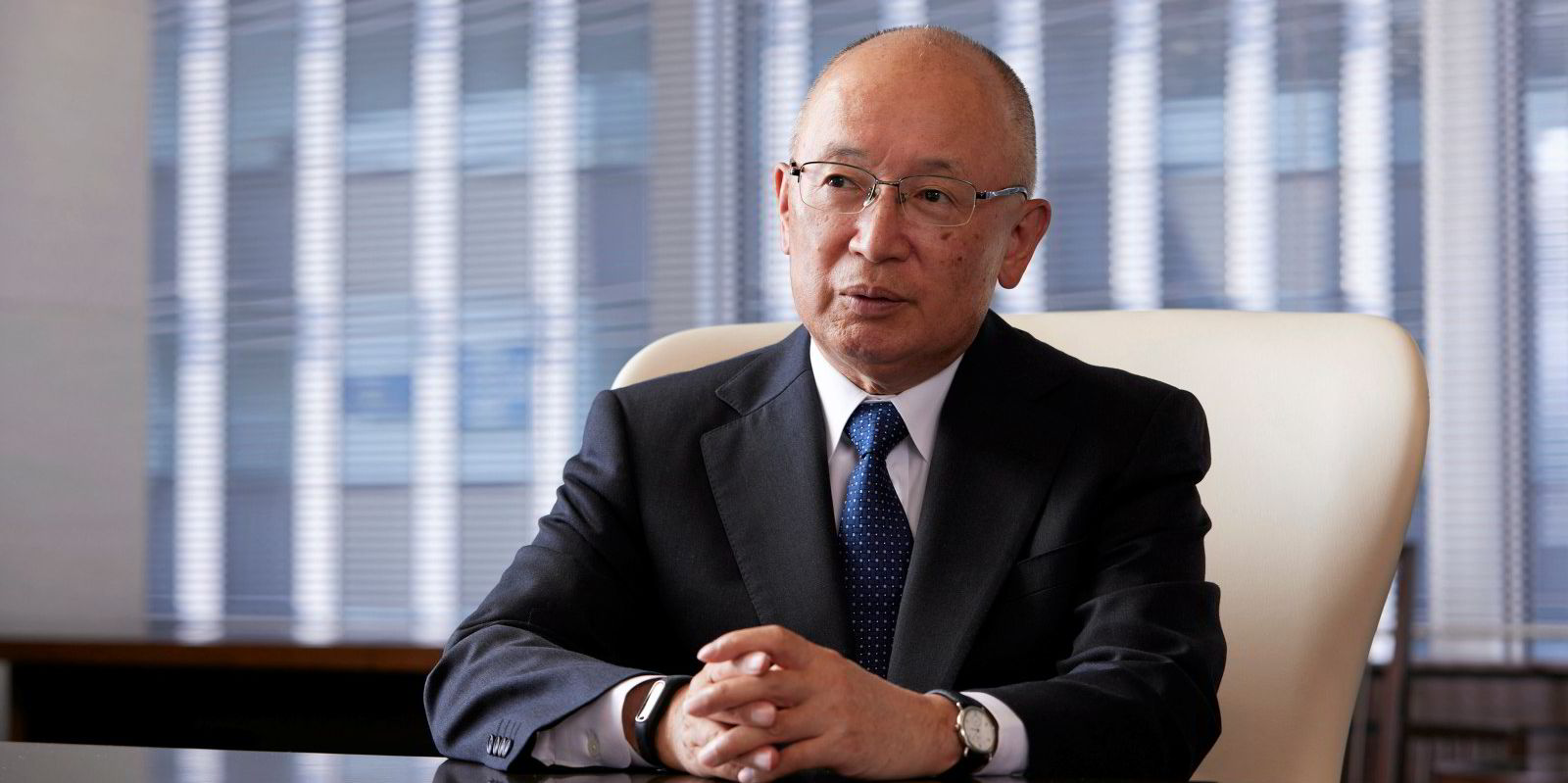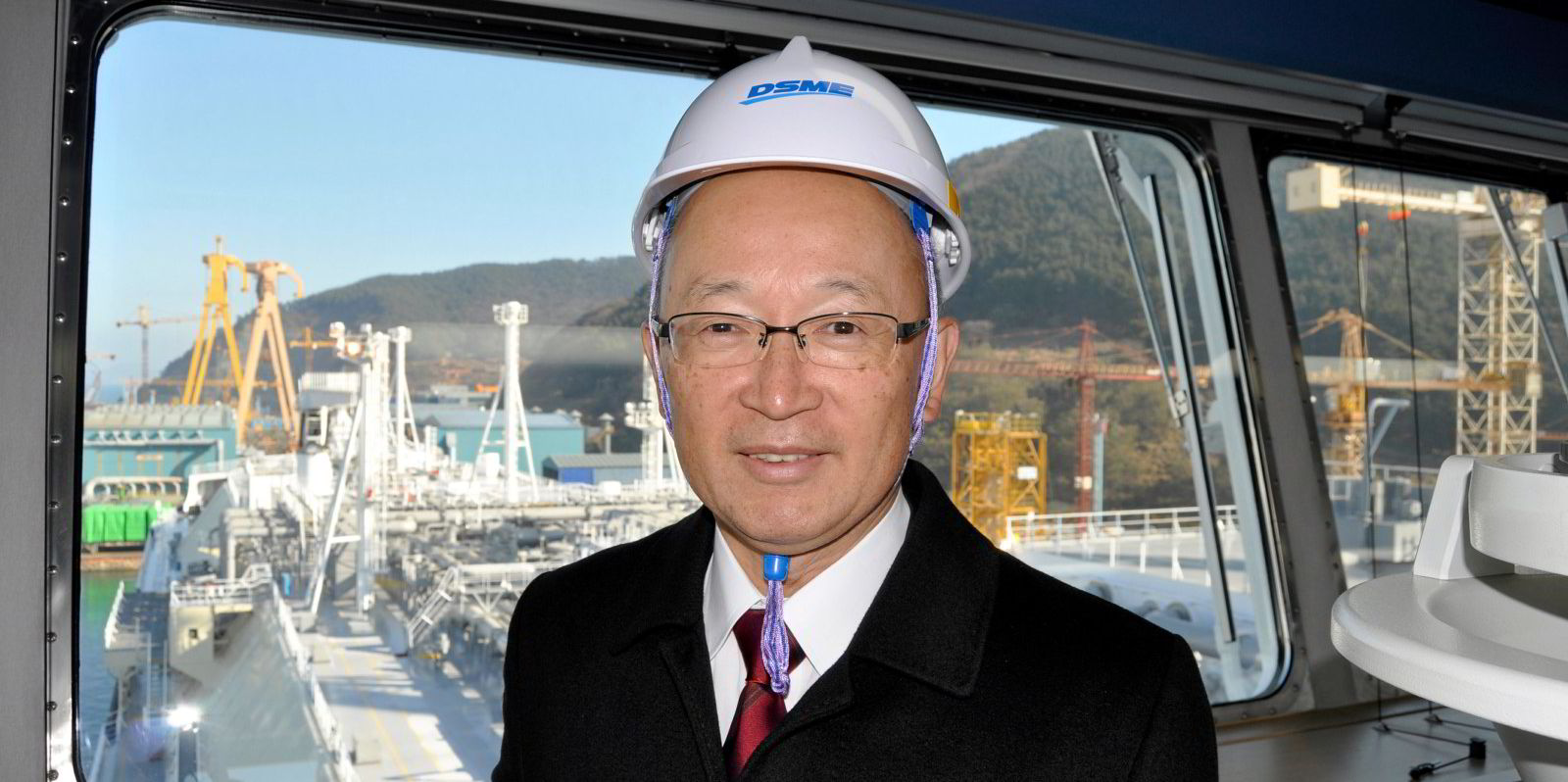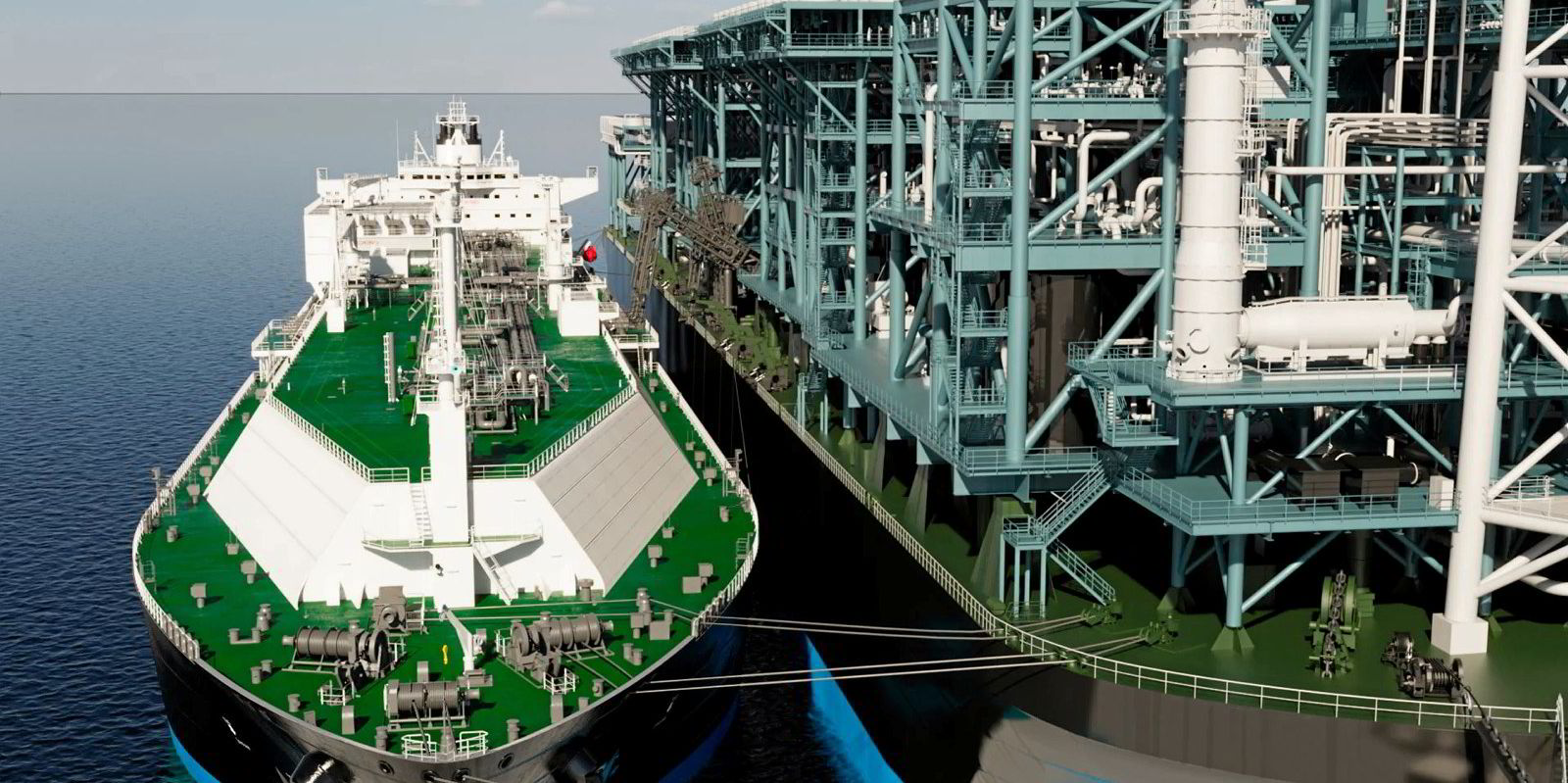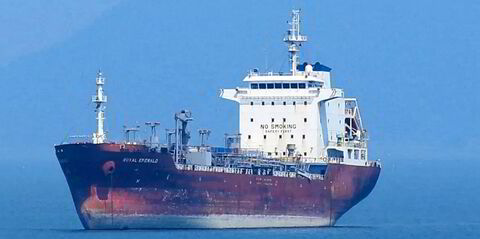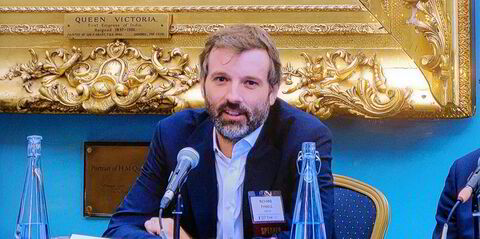Rarely a day goes by without an announcement landing from Japan’s largest shipowner, Mitsui OSK Lines, with most of these signalling moves in decarbonisation.
At the helm is president and chief executive Takeshi Hashimoto — for many years the company’s lead on all things LNG — who modestly says he doubted he would make it to the top job.
Two-and-a-half globally turbulent years on from his appointment to the hot seat, the change at the company is palpable. Those joining MOL have spoken about how “non-Japanese” it now feels, with a mix of foreign nationals employed to add specialist expertise on the new areas, half of the work discussions conducted in English and conversations being refreshingly open.

MOL’s main man attracts many compliments. Those working with Hashimoto describe him as “progressive”, “professional”, “down to earth”, “very honest”, “always keen to help” and “a great guy”. One senior colleague calls him “a leader and a visionary”.
An employee who has known him from both sides of the MOL fence for many years says that although he has a gentle demeanour, he is “a very strong man”.
“He takes these environmental issues to heart,” another executive comments. “And he is putting his money where his mouth is.”
Hashimoto has laid out a clear decarbonisation pathway for MOL’s core shipping business. The company is focused on deploying energy efficiencies, building dual-fuel vessels, investing in clean energy infrastructure — sometimes upstream supply, as it has done recently on LNG and ammonia — and digitalising the business.
Hashimoto, who is said to come exceptionally well prepared for meetings, with good knowledge across all issues, is also visible outside MOL, attending the United Nations’ COP climate conference and the World Economic Forum.
One senior executive says that while the company is fully aware of its roots in shipping, Hashimoto wants to see it play a role globally beyond the maritime sector.
“We aim to become a resilient global enterprise,” Hashimoto tells TW+.
Asked about his top three moves on decarbonisation, he highlights that MOL is embracing low or zero-emissions fuels. Even though each option has its own uncertainties, he says: “Waiting will not lead to progress. It is important to start taking action now and make the trend.”
Hashimoto also mentions carbon reduction measures for vessels such as LNG-fuelled ships, efficiency improvements and wind power devices like MOL’s in-house-developed Wind Challenger project.
He says it is difficult for individual shipping companies to achieve a low or zero-emission fuel supply chain, so MOL is participating in international initiatives, such as Singapore’s Global Centre for Maritime Decarbonisation, first-mover coalitions and discussions across the entire supply chain.
Hashimoto, who jogs daily — despite a gruelling schedule — and has a love of history, is said to be very committed to bringing through the next generation. One executive explains that many of MOL’s projects will probably take a further five years to put in place, and it is the 30 and 40-year-olds in the company who will need to push these through.
Hashimoto says MOL has set milestones to meet its goal of net zero emissions by 2050. Among these, it will deploy net zero emissions oceangoing vessels using fuels such as green ammonia by 2030, and expand this fleet beyond this date.
Colleagues recount that at a recent ceremony at Tokyo headquarters, the boss raised the subject of ammonia and hydrogen, and encouraged those coming through to run with it, saying: “This is not my world, but it will be yours.”
Hashimoto is also aware of the volatility of the shipping markets and, as the industry decarbonises, MOL is diversifying into areas like cruise and real estate, to ensure a stable income stream for those who will take the company onwards.
So what is his advice on decarbonisation to other leaders in shipping?
“I understand the desire to wait and see until there is a clear consensus for the main fuel,” he says. “However, if everyone continues to wait and see, things will not change. We must set the basic policy based on the experimental data, and then move forward proactively.”
